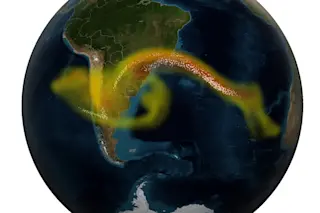In 1970 Russian geologists started drilling into the Kola Peninsula, near Finland, hoping to learn more about Earth’s enigmatic insides. After 22 years of digging, work had to stop when the crust turned gooey under the drill bit; at 356 degrees Fahrenheit, the underground rock was much hotter than expected at that depth. The result of the scientists’ grand effort: a tunnel as wide as a cantaloupe extending all of 7.6 miles down.
The Kola borehole is by far the deepest one ever dug, yet it reaches a mere 0.2 percent of the way to the core. The rest of Earth’s interior remains as frustratingly out of reach as it was three centuries ago, when astronomer Edmond Halley suggested that our planet was hollow and filled with life. His ideas seem laughable today, but the truth is, when it comes to the inner Earth, no one knows anything for sure. ...













